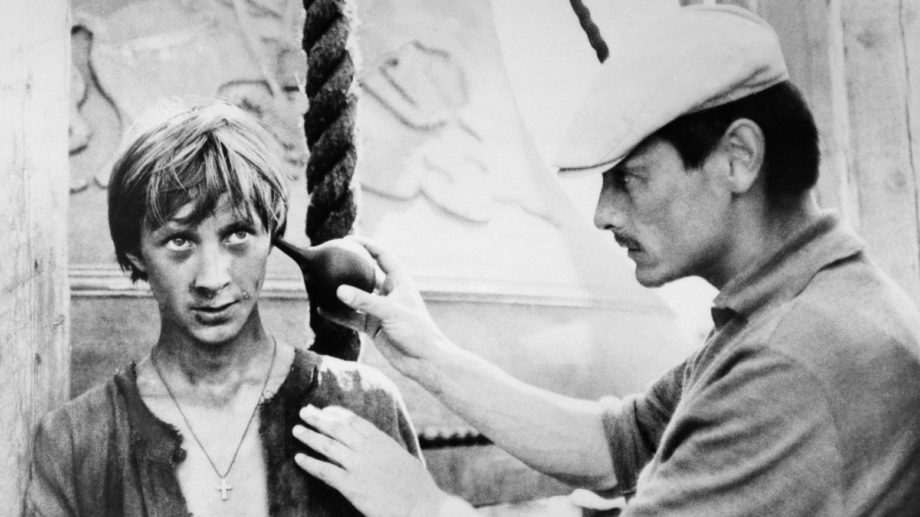As our run of a new restoration of Andrei Rublev continues, read statements by Andrei Tarkovsky on the making of his medieval-set masterpiece. The below excerpts, translated by Robert Bird, appear on nostalghia.com. The production history of the film draws upon Bird’s book Andrei Rublev.
“Rublev celebrated the great ideals of humanity in his works. The idea of brotherhood, the unity of the human family, will be the most important one for the film. Truly great art becomes more and more precious as time goes by. How many people’s thoughts, emotions, and hopes must have impregnated Rublev’s paintings over the centuries! I would like to transport those hopes to the screen.”
“The idea of the film has occurred already during my work on Ivan’s Childhood, and I admit the idea wasn’t mine. We were strolling through a forest on the outskirts of Moscow once: myself, Konchalovsky, and the film actor Vasily Livanov . . . Just then Livanov proposed that the three of us should write a screenplay about Rublev, and he mentioned he would really love to play the main role. But later the circumstances prevented Livanov from joining us in writing the screenplay. In the meantime, we found ourselves unable to give up the project which enraptured us completely. We were progressing quite fast: after one year (a little over), we had three screenplay variants ready.”
“The actor in the title role had to be a man never before seen in film. To play Rublev, whom everybody imagines differently, one could not take a person reminding us of his other roles. That’s why we selected an actor from a theater in Sverdlovsk who had until then only played small episodes. [Anatoly] Solonitsyn, having read the screenplay published in the monthly Iskusstvo kino, traveled to Mosfilm at his own expense and declared that nobody could play Rublev better than him. After the screen test, I became convinced that he was
indeed the best for the role.”
“A biographical film? No, this film does not belong to the genre as no chapters of anybody’s biography are being reenacted on-screen. It wasn’t my intent to reconstruct Rublev’s life, but as I mentioned before, I’m interested mainly in the human being and also the atmosphere of years past. But this doesn’t mean it’s a historical picture. In my opinion, historical accuracy does not mean historical reconstruction of events; the important thing for what we want to show is that it should possess all attributes of plausibility. So-called ‘historical films’ are frequently too decorative and theatrical. It was my conscious decision to avoid all exoticism.”
“For years, cinema has depended upon the dramaturgy of theater; now cinematic art is getting closer to poetry. I can see a very close relationship between explorations in poetry and those of modern cinema. I like using allegories, metaphors, and similes. I like seemingly impossible confrontations. Confronting subjects which appear to escape cognizance stirs up within me deepest thoughts filled with images. More and more films are being made based on the logic of the poetic image.”
“I’d like to point out the film ends with an image of horses in the rain. It is a symbolic image as the horse for me is a synonym for life. When I’m looking at a horse, I have a feeling I’m in direct contact with the essence of life itself. Perhaps it’s because the horse is a very beautiful animal, friendly to man, and is moreover so characteristic of the Russian landscape. There are many scenes with horses in Rublev. Take the scene in which a man dies after an unsuccessful attempt to fly. A sad-looking horse is a silent witness to the scene. The presence of horses in the last, final scene means that life itself was the source of all of Rublev’s art.”
See Andrei Rublev showtimes and get tickets here.



